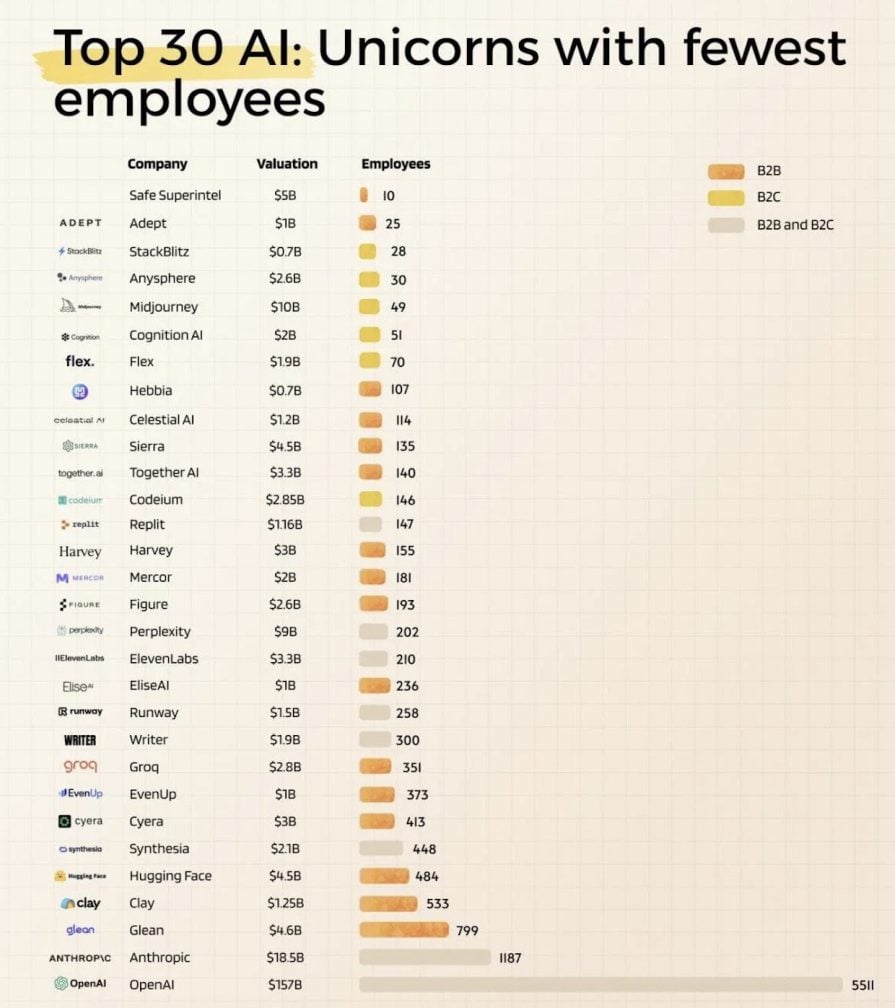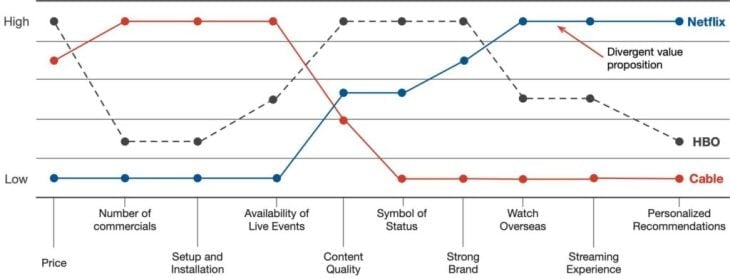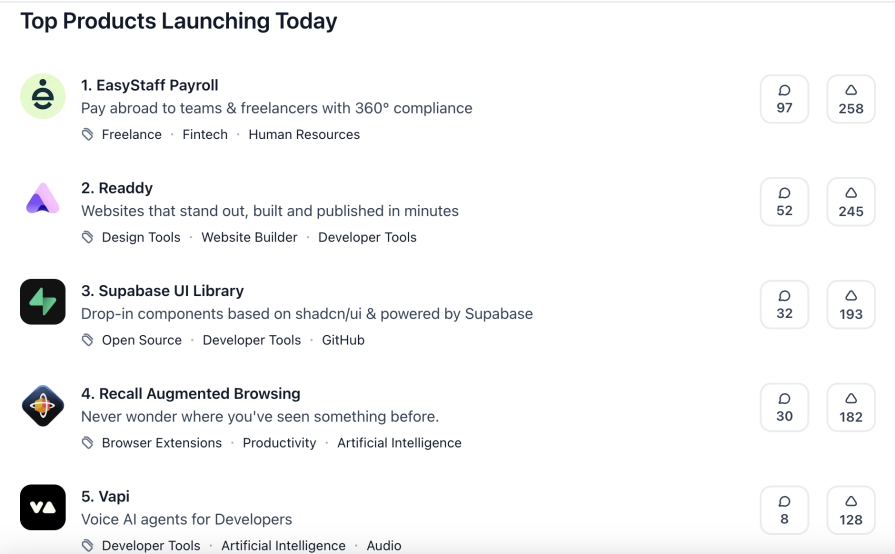Revisiting competitive analysis in the age of AI
There are thousands of books and articles out there on competitive analysis. I even wrote a few pieces myself.
Sadly, they’re all obsolete now.
The rise of AI changed the rules of the game. Solving pain points and shipping new products has become faster and cheaper than ever before. The time when a few big companies ruled over the whole segment is coming to an end.
Because of this, we must rethink how we understand our competition and how we monitor it.
Old-school competitive analysis no longer works
Traditionally, you would approach competitive analysis by identifying a few key competitors, ideally both direct and indirect ones, and monitoring them on a continuous basis.
You would then use tools as advanced as a strategy canvas or as simple as comparison tables:
This provided a clear picture of how the competitive landscape looked, how each competitor differentiated, and where the opportunities were.
But the big, established companies are no longer the biggest threat:

You no longer need thousands of employees and decades on the market to pose a billion-dollar threat.
Small companies can roll out dozens of AI features every month and iterate extremely fast, while big companies are often slowed down by their size.
Odds are your most dangerous competitor isn’t among the top-five biggest companies on the market, but rather a small, new market entrant that appeared a month ago.
How AI is redefining competition
There are two main things that make small AI companies dangerous.
First, it’s speed.
With many out-of-the-box AI tools and models available for easy integration, companies can deliver enormous value with simple model customization. You no longer need hundreds of engineers to build something meaningful. On the contrary, smaller teams tend to deliver faster.
Feature velocity is a new competitive weapon.
The second, even a more worrying factor, is the ability to niche down rapidly.
The typical strategy in the past was to find an underserved user segment and provide a niche enough experience to differentiate. This way, a successful entrant could eat 5 percent of the cake and build on top of that.
But with development being so fast and cheap with AI, you can niche down even further. Even if there’s a niche that has two hundred potential users, if all it takes is some tweaks to the AI model and proper UI, it might be enough ROI to justify the investment.
In the past, you would get three new entrants each year competing for 5 percent of the cake. Now, you get hundreds of entrants, each competing for 0.1 percent of the cake. It’s small enough to stay under the radar, but with hundreds of companies doing it, you might end up losing half of the cake before you realize what’s going on.
Practical strategies to deal with competitors in the AI era
Now that I introduced you to the problem, let’s hop into the brighter part of the article — how to actually deal with competitors in the AI era.
Track new entrants
The first step is to understand what’s going on in the market. You can easily assume that each week there’s at least one new competitor that wants to steal your market share. I discover them in three ways:
Superhuman.ai
Whenever a new noteworthy AI product appears, the Superhuman newsletter covers it sooner or later. It’s a great way to stay on top of what’s going on.
Product Hunt
Product Hunt is a community-driven daily/weekly/monthly ranking of new products:
If a new product is noteworthy, you can bet someone will rank it.
Mobile stores “New” section
Reviewing the “new” section of App Store and Google Play is an effective way to see new entrants in the category you play in.
Copy
The best thing about iterating fast is that you learn fast. You can assume that whatever feature sticks around is validated and relevant.
As long as these features are relevant to your target audience or sub-segment, copy them.
Let’s face it. The odds of you outpacing hungry AI-driven startups are small. Instead of competing with them on speed, just use the speed they have for yourself.
Focus on a competitive moat
Build one thing that you do exceptionally well and that can’t easily be replaced. If your main competitive advantage is a feature that can be built in a couple of weeks, then you’re in danger.
But there are things that aren’t so easy to copy, even with AI.
A few examples of anti-AI moats include:
- SEO — Building a strong SEO presence takes years and requires powerful content loops, which aren’t so easy to copy with AI
- Community — As knowledgeable as AI is, sometimes you want to hear something directly from another human being. For example, Reddit won’t be losing to ChatGPT anytime soon
- Data — The more valuable data you have on your users, the better experience you can provide and the higher the switching cost becomes for your users
Build a small, isolated innovation team
Lastly, consider competing with yourself, instead of waiting for new entrants to show up and fight for the 0.1 percent of your cake. You can build small innovation teams or even set up external companies to do that instead.
The goal here is to achieve the velocity and performance of small AI startups. It’s often impossible to do within larger organizational structures, but achievable if you leave a small team alone and let them work on their own.
Final thoughts
Whenever I look at what’s going on in the market I get both anxious and excited. It feels like everything sped up dramatically in the last couple of years, which makes defending your market position increasingly hard.
AI pushes us to speed up and excel on the team, product, and organizational level. It makes otherwise sluggish and very structured companies move faster and become more agile.
With so many companies building fast, you can just wait for them to do the learning part and copy what works from them. Or, you can also build a small startup team on our own to benefit from the speed of AI development.
The competitive landscape is evolving rapidly, so it’s hard to say what it’s going to look like in a year or two. One thing is for certain though: It’s no longer the big market leaders that are the biggest threat.
Featured image source: IconScout
The post Revisiting competitive analysis in the age of AI appeared first on LogRocket Blog.
This post first appeared on Read More




